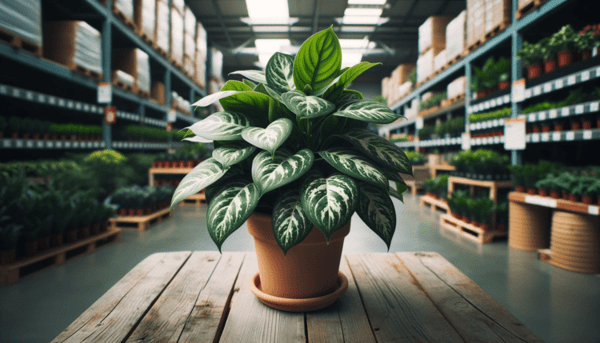
dumb cane
Information for the customer:
- Plant Position: indoor , potted
- Soil Type: well draining , porous
- Common Diseases: leaf spot , blight
- Common Pests: spider mites , mealybugs , thrips
- Watering Needs: moderate: anytime between weekly to fortnightly
- Shade Requirements: yes
- Lighting Requirements: average light: 50% - 75% of daily sun
- Pet Child Friendly: no
- Air Purifying: yes
- Humidity Needs: moderate
Additional Facts and Info:
- Scientific Name: dieffenbachia
Extensive Info on the dumb cane:
How do you take care of a Dieffenbachia?
Location
The Dieffenbachia likes to be placed in a spot with lots of light. Not all species tolerate bright light well. It is best to place the plant in medium bright light. The Dieffenbachia prefers a spot next to a window on the west or east. A spot near the south is of course also possible. Make sure that the plant is at least 2 meters away from the window. A spot near the north probably has too little light.
If a Dieffenbachia gets too little sunlight, the plant will grow long stems. With its long stems, the plant hopes to reach the sunlight. This can be crucial for the plant because the leaves can become too heavy and break off if the stems get too long. Therefore, don’t forget to rotate the Dieffenbachia! The plant grows towards the sun, so rotating it helps ensure even growth.
Watering
It is important to always keep the soil of the Dieffenbachia slightly moist. You can check this with your finger in the soil. Never let the Dieffenbachia dry out. Not even in winter! It is best to water the Dieffenbachia once a week all year round. In the winter, it may be a smaller amount. When watering the Dieffenbachia plant, one thing to keep in mind is not to overwater it. Overwatering can ruin leaves of the Dieffenbachia, causing them to become limp or developing root rot.
Plant nutrition
The Dieffenbachia doesn't use a lot of energy. However, the plant can enjoy some extra nutrients. You can provide these nutrients using plant nutrition every 2 weeks. We recommend dividing the strength of the plant nutrition in half. After autumn and in winter, it is better not to give extra nutrients, as plant nutrition during that time can be harmful to the Dieffenbachia.
Repotting
Repotting the Dieffenbachia isn't necessary every year. The plant is a slow grower. Repotting the plant every 2 years gives enough nutrients and more room for root growth. The airier soil is also very good for water flow. The best period to repot is in spring.
Air-purifying
The Dieffenbachia is a light air-purifying plant. This is mainly due to the large leaves of Dieffenbachia. The large leaf surface gives the plant extra stomata. Dieffenbachia plants use stomata to convert CO2 into oxygen during the day.
Is the Dieffenbachia toxic?
The Dieffenbachia is toxic, and this toxicity is in the juice of this plant. Interestingly, it gets its name because chewing it can cause swelling in the vocal cords and make it hard to speak.
Diseases and peculiarities
If the air is too dry, the Dieffenbachia can suffer from mealybugs. To prevent mealybugs, it is best to use a plant sprayer once a week. Mealybugs are an infection on plants and can be recognized by infected leaves and a kind of cobwebs. If you come across mealybugs, placing the plant outside with exposure to wind and moisture from outside can help keep the mealybugs away.
Frequently asked questions about the Dieffenbachia
Why does my Dieffenbachia get yellow leaves?
If the Dieffenbachia develops yellow leaves, this is usually due to too much light. However, it is also possible that the Dieffenbachia is suffering from root rot. If the stem of the plant feels soft, then this, in combination with yellow leaves, could be root rot. In this case, reduce the watering.
How large can a Dieffenbachia get?
Dieffenbachias are compact and often small plants. A Dieffenbachia can grow to a maximum of 180 cm, but you will need to be patient.
Can you propagate a Dieffenbachia?
Yes, you certainly can. Check out our tips on how to propagate the Dieffenbachia.